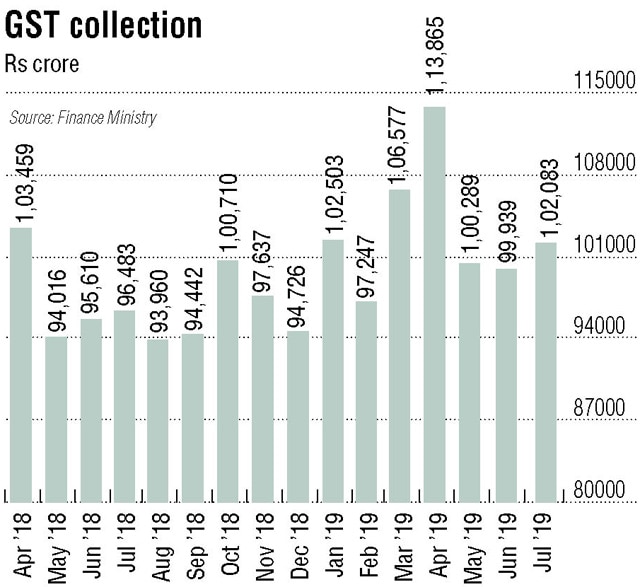The government has detected Goods and Services Tax (GST) evasion of over Rs 45,000 crore during the financial year 2018-19. Of this, tax sleuths have recovered an amount of Rs 25,000 crore during this period, as per the data available with the finance ministry.
The revenue department of the ministry has registered around 37,000 cases in the last fiscal.
The cases registered by the tax authorities range from misuse of Input Tax Credit (ITC), mis-declaration to non-filing of GST returns. The most common modus operandi of evasion is the use of fake invoices. Close to 2,000 cases of fake invoices involving Rs 8,000 crore were registered during 2018-19. Tax sleuths recovered Rs 736 crore of the total tax evaded on account of fake invoices.
According to experts, this will be a small percentage of the tax leakage that takes place in the system. There are, however, no formal estimates to show the possible tax evasion that takes place in the country.
“What one can say about gold smuggling is that 3-10% of the smuggled amount of gold gets detected. Similarly, only a small percentage of GST gets detected. But it is difficult to say the same for GST unless there is a proper study,” said Arun Kumar, former professor of Economics at Jawaharlal Nehru University.
It is difficult to detect tax evasion given the complexity of GST. “The complex system lends itself to tax evasion. Many items are exempt from taxes which breaks the chain. For example, wheat is exempt, atta (flour) is not. You can evade taxes on the amount of wheat you are buying and therefore not pay on the atta you sell by under-invoicing. There are many other items like these that are tax-exempt. This enables the generation of fake invoices. Tax leakage takes place further when people on the basis of fake bills claim fake credit through ITC,” he said.
"Earlier, the evasion of excise and sales tax was rampant through under-invoicing, over-invoicing and fake invoicing. The tax leakage continues to take place the same way even in the new tax regime,” said Shashi Bhushan Singh, former member, Central Board of Indirect Taxes and Customs. The GST was implemented in July 2017 after the single tax subsumed various taxes, including excise and sales tax. All the goods and services were placed under 0%, 5%, 12%, 18% and 28% tax slabs.
In the first year of implementation of the new regime, tax sleuths detected GST evasion of over Rs 4,400 crore.
"Fake companies are being set up to claim ITC. It is difficult to detect them where the entire chain of production of supply is outside the bill network. That's why a small percentage of the entire amount of GST gets collected,” said Kumar.
GST collections have been stagnating at around Rs 1 lakh for the last few months against the monthly target of Rs 1.14 lakh crore for the current financial year. Last year, the shortfall in GST was to the tune of Rs 80,000 crore with the monthly collections averaging around Rs 97,000 crore, whereas the target was Rs 1.1 lakh crore.
Professor Kumar suggests simplifying the destination tax by levying tax at the final stage. “The GST should be levied on the final consumption, leaving out the intermediate stages of production and distribution. Currently, a product is taxed at 100 places and scores of entries are required to be made. Since the complexities of GST arises due to the various intermediate stages of transactions, sales, production, transportation, accounting.. why not simplify the tax by eliminating the intermediate stages of tax. These stages are anyway passing on the tax to the final stage. At the earlier stages, one pays tax on inputs and claims the credit through ITC,” Kumar said.
Published On : 13-08-2019
Source : DNA India

